At Aspire Behavioral Solutions, we believe that a key component of Applied Behavior Analysis (ABA) is building strong, trusting relationships with the children we work with. One of the first steps in ABA is building rapport – a positive, trusting connection that sets the stage for effective behavioral interventions.
In ABA, rapport is sometimes referred to as “pairing,” where you intentionally associate yourself with enjoyable experiences to create a favorable bond. This connection is essential for helping children feel comfortable, engaged, and more open to participating in the learning process.
Why is Building Rapport Important in ABA?
Building rapport is a critical first step in ABA because it helps ensure that children are motivated and ready to participate in activities. By fostering a positive relationship, we’re more likely to gain the child’s cooperation and increase their engagement with future learning tasks. Rapport-building is not just about fun interactions; it’s about setting the groundwork for success in behavioral growth and learning.
Key Strategies for Building Rapport in ABA
- Use a Positive Tone and Approach
In ABA, one of the most important aspects of rapport building is to use a friendly, positive voice tone when interacting with a child. This sets the stage for a safe and welcoming environment. During this phase, it’s important not to provide any corrections or demands but to just focus on creating an enjoyable interaction. - Control Access to High-Preference Items
High-preference items or activities are those that a child finds especially engaging. In ABA, controlling access to these items is a powerful way to build rapport. For example, if a child loves makeup, you might hold onto the makeup items and give them to the child as they request them. This encourages the child to seek you out and initiate social interactions. It helps you become associated with something enjoyable! - Vary Activities to Maintain Interest
In ABA, variation is key to keeping the child engaged. By switching up the activities or items you use during rapport-building sessions, you can prevent the child from becoming bored or disinterested. Changing activities regularly ensures that the interactions stay fun and motivating, which is crucial for long-term engagement. - Engage Actively in Play
One of the best ways to build rapport is by actively participating in the activities the child enjoys. Whether it’s playing with toys, drawing, or doing something creative, engaging alongside the child helps to foster a positive connection. Smiling, showing excitement, and mirroring the child’s enthusiasm helps make the interaction enjoyable. - Honor Requests and Reinforce Positive Behavior
During the rapport-building phase, always respond positively to the child’s appropriate requests. If they ask to switch activities or request a different toy, be sure to honor their wishes. This builds trust and reinforces the idea that their preferences are valued. - Deliver Items Non-Contingently
In ABA, it’s important to provide high-preference items or activities without requiring the child to demonstrate a skill or perform a behavior first. This means you offer these enjoyable things “for free”—without any strings attached. This helps create positive associations and fosters a relationship where the child feels comfortable and happy to engage with you.
How Does Rapport Impact ABA Treatment?
Rapport is not just about making a child feel comfortable; it’s a vital step in setting up successful ABA interventions. By building rapport first, you establish a foundation where the child feels safe and motivated to cooperate. This makes it easier for the child to follow instructions and participate in more structured learning activities later on.
Additionally, building rapport allows you to assess the child’s preferences and identify motivators that can be used to increase engagement during therapy. In ABA, understanding what drives the child’s behavior is crucial for implementing effective interventions.
Transitioning from Rapport to Learning in ABA
Once rapport has been established, you can begin transitioning into more structured learning activities. One way to do this is by using the Premack Principle. This principle involves using a preferred activity or item to motivate the child to engage in less-preferred tasks.
For example, you might say: “First, let’s go wash our hands, and then we can come back and play with the blocks!” By using a highly preferred activity as a reward for completing a less-preferred task, you motivate the child to engage in the learning process while keeping the experience positive and rewarding.
At Aspire Behavioral Solutions, we believe that building rapport is one of the most important foundations of Applied Behavior Analysis. By starting with fun, positive interactions, we create the conditions for successful behavioral interventions that are tailored to each child’s individual needs.
Stay tuned for more in our What is ABA series as we continue to explore key concepts and strategies for effective behavior therapy.
